Pythagoras' Theorem
|
Pythagoras' Theorem |
 |
Years ago, a man named Pythagoras found an amazing fact about triangles:
|
|
|
|
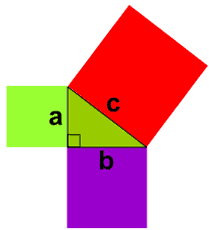 |
It is called "Pythagoras' Theorem" and can be written in one short equation:
a2 + b2 =
c2
|
Definition
The longest side of the triangle is called the
"hypotenuse", so the formal definition In a right angled triangle: the square of the hypotenuse is equal to the sum of the squares of the other two sides. Sure ... ? Let's see if it really works using an example. Example: A "3,4,5" triangle has a right angle in it. |
|
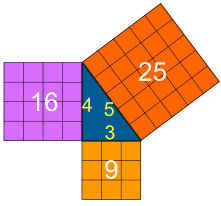 |
Let's check if the areas are the same: 32 + 42 = 52 Calculating this becomes: 9 + 16 = 25 It works ... like Magic! |
Why Is This Useful?
If we know the lengths of two
sides of a right angled triangle, we can find the length of How Do I Use it?Write it down as an equation: |
|
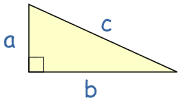 |
a2 + b2 = c2 |
|
Now you can use algebra to find any missing value, as in the following examples: Example: Solve this triangle. |
|
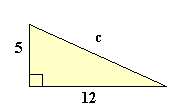
|
a2 + b2 = c2 52 + 122 = c2 25 + 144 = c2 169 = c2 c2 = 169 c = √169 c = 13 ++++++++++++++++++++++++++ |
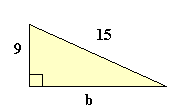 |
a2 + b2 = c2 92 + b2 = 152 81 + b2 = 225 Take 81 from both sides: b2 = 144 b = √144 b = 12 |
Example: What is the diagonal distance across a square of size 1? |
|
 |
a2 + b2 = c2 12 + 12 = c2 1 + 1 = c2 2 = c2 c2 = 2 c = √2 = 1.4142... |
|
It works the other way around, too: when the three sides of a triangle Example: Does this triangle have a Right Angle? |
|
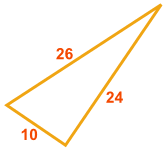 |
Does a2 + b2 = c2 ?
They are equal, so ... Yes, it does have a Right Angle! |
Example: Does this triangle have a Right Angle? |
|
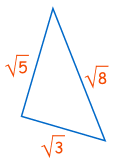 |
Does a2 + b2 = c2 ? Does (√3)2 + (√5)2 = (√8)2 ?Does 3 + 5 = 8 ? Yes, it does! So this is a right-angled triangle
|
And You Can Prove The Theorem Yourself !Get paper pen and scissors, then using the following animation as a guide:
|
|
In : Math



